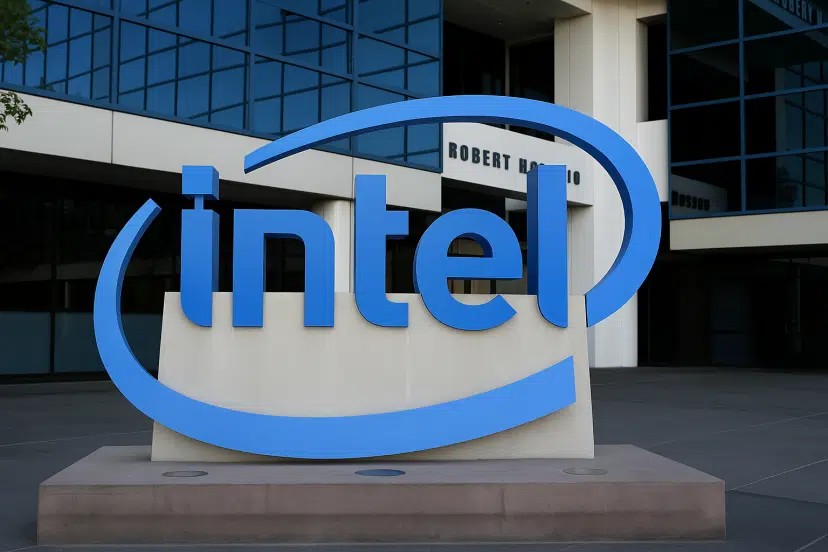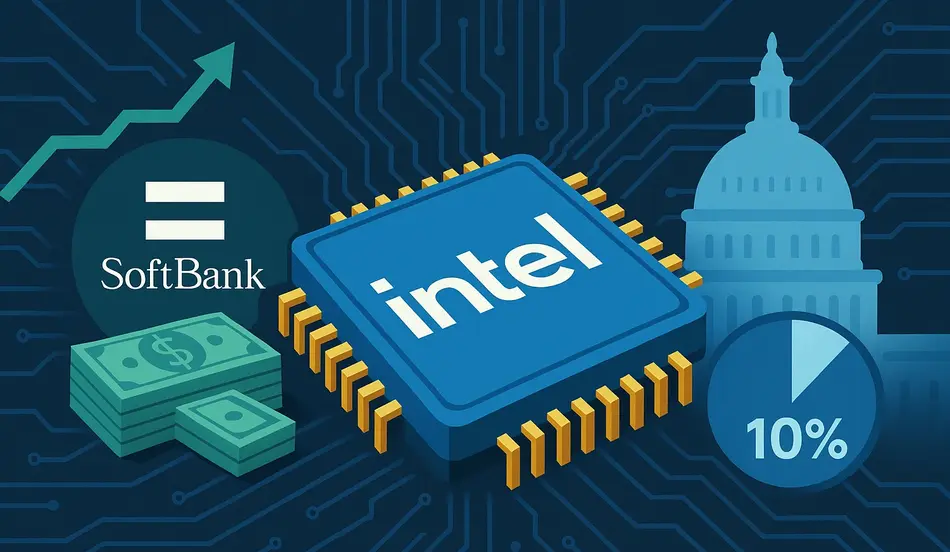SoftBank invests $2 billion in Intel, offering a lifeline that many see as a critical vote of confidence in the embattled U.S. chipmaker. The deal comes amid reports that the Trump administration is considering taking a 10% stake in Intel — a move that could make the U.S. government the company’s largest shareholder.
SoftBank, the Japanese investment powerhouse, will acquire 87 million newly issued Intel shares at $23 each, giving it a 2% stake. Intel’s stock jumped more than 5% in premarket trading after the announcement, with investors brushing aside dilution concerns in favor of the signal that a major global investor is backing Intel’s turnaround efforts.
Table of Contents
Intel’s Struggles Run Deep
Despite the injection of fresh capital, Intel’s challenges remain profound. The company reported a $2.9 billion loss last quarter and is preparing to lay off 15% of its workforce this year. Its foundry business, central to Intel’s long-term strategy of competing with Taiwan Semiconductor Manufacturing Company (TSMC), is not expected to break even until at least 2027.
The fundamental issue is not just money, but customers. Intel needs large-scale commitments from tech giants to keep its foundry business afloat. In recent years, companies like Apple, Amazon, and Google have turned to Nvidia and AMD for high-performance chips, citing Intel’s inability to keep pace technologically. Analysts at Wedbush note that “cash alone won’t solve Intel’s problems. What Intel needs most is consistent demand.”

SoftBank Invests $2 Billion Amid Government Pressure on Big Tech
The Trump administration has signaled that it views Intel as strategically vital. Officials are considering using CHIPS Act funding to purchase up to a 10% equity stake in Intel, effectively turning the federal government into its largest shareholder. Such a move would mark one of the most aggressive interventions in the U.S. semiconductor sector since the 2008 financial crisis, when Washington bailed out automakers.
Critics argue that forcing tech companies to buy Intel chips they don’t want could hurt innovation and weaken the broader tech ecosystem. Others suggest the government may offer incentives—such as subsidies or tax breaks—rather than mandates, to encourage companies to purchase Intel products.
SoftBank’s U.S. Tech Push
For SoftBank, the Intel deal extends its recent U.S. technology push. The firm has poured money into projects like the Stargate data center initiative alongside OpenAI and Oracle, and it recently acquired Foxconn’s electric vehicle plant in Ohio. SoftBank also remains heavily invested in ARM, which is building new CPU designs that could compete directly with Intel’s future products.
Hire the Talent Powering the Next Tech Boom
Post your job on WhatJobs and connect with engineers, analysts, and innovators ready to shape the future of semiconductors and AI investment.
Post a Job Now →Strategic Stakes
The debate around Intel reflects a larger geopolitical reality: the U.S. depends heavily on Taiwan for advanced chip manufacturing. With tensions in the Taiwan Strait rising, policymakers see Intel as a cornerstone of efforts to “reshore” chipmaking capacity and secure supply chains.
For now, Intel has bought itself time with SoftBank’s cash and the possibility of U.S. government backing. But analysts caution that unless the company improves its chip technology and secures major customers, its survival as a global leader in semiconductors remains uncertain.
FAQs
1. Why is SoftBank investing in Intel now?
SoftBank sees Intel as a strategic asset in the U.S. semiconductor ecosystem. The $2 billion investment signals confidence that Intel, with government support, could eventually recover its competitiveness and benefit from the push to manufacture chips domestically.
2. What does a U.S. government stake in Intel mean?
If the Trump administration uses CHIPS Act funding to buy a 10% stake, the U.S. would become Intel’s largest shareholder. This could give Washington greater influence over Intel’s strategy, but it also raises concerns about government involvement in private business.
3. Will Apple, Amazon, or Google be forced to use Intel chips?
There is no official mandate, but analysts expect pressure on major tech firms to increase. While Biden’s administration encouraged U.S. firms to consider Intel, Trump’s team may take a harder stance, potentially offering incentives—or penalties—to push adoption.
4. Can Intel recover without new customers?
Unlikely. Intel’s foundry business cannot succeed without major external contracts. Capital helps cover losses, but long-term viability depends on whether companies like Apple or Amazon trust Intel’s products enough to integrate them at scale.




